Earlier this week, stomach-churning footage of the world’s first floating pool went viral as swimmers were seen doing laps between two skyscrapers.
The Sky Pool – which opened at the Embassy Gardens flats in Nine Elms, south-west London, last month – made a splash over the Bank Holiday weekend, but left social media users dizzy.
The jaw-dropping structure is 25 metres long, five metres wide and three metres deep, and boasts magnificent views of the London Eye and the Houses of Parliament for those brave enough to take a dip.
Around the world, there are plenty more terrifying destinations for tourists seeking to spice up their long-awaited holidays.
But be warned: from Hawaii’s ‘Pool of Death’ to the creaking trail at China’s Mount Hua Shan, thrillseekers have even lost their lives at these truly treacherous hotspots.
Mount Hua Shan, China
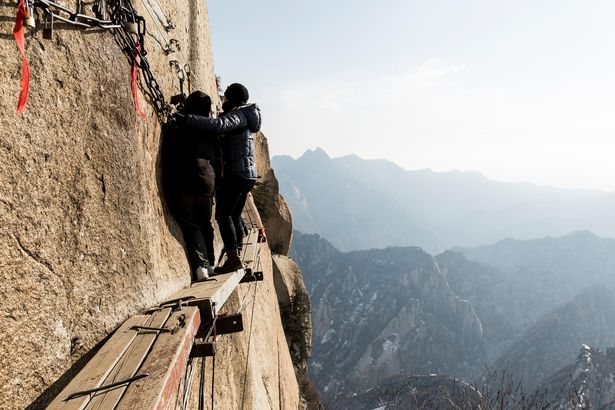
(Image: Alamy Stock Photo)
Held together by seemingly nothing more than a few staples and planks of wood, the cliffside trail at Mount Hua Shan is considered among the most dangerous in the world.
Tourists with a head for heights can clip themselves into a harness and make their way across the path, which is only a foot wide, but looking down they face a fall of 7,066ft.
The perilously steep mountain’s vertical drops and sheer staircases are even said to claim 100 lives a year, though this figure has never been officially proven.
Two years ago, a Chinese student plunged to her death while climbing the attraction in the north-western province of Shaanxi.
She had been sharing clips of her progress with her classmates until suddenly disappearing, before her university informed her parents a day later.
Sadly, shocking footage from 2018 also showed a man unclipping his harness on the plank walk and jumping to his death.
Queen’s Bath, Hawaii
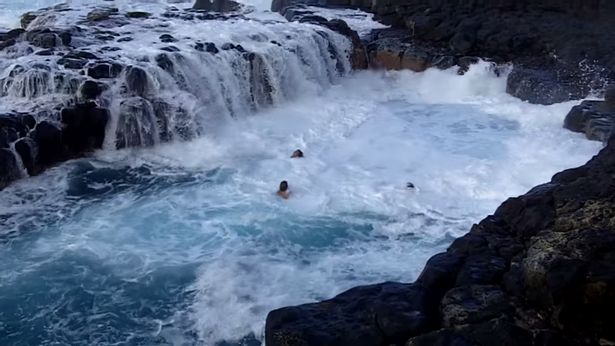
(Image: Bob Patenaude/Youtube)
It looks like a literal oasis of calm, but don’t let the ‘Queen’s Bath’ fool you.
Also known as the ‘Pool of Death’, the notorious sinkhole in Kaua’i, Hawaii, features terrifying tidal swings that can see walls of water sweep swimmers into the sea in seconds.
Heart-racing video that emerged in 2010 showed three swimmers battling against a sudden swell after jumping into the rock pool.
Initially calm, the water levels in the pool dramatically sink by several feet, before crashing waves pour over the edges and pull them out into the ocean.
While the boys thankfully managed to pull themselves up, others have not been so lucky.
The pool is responsible for at least five deaths over the last decade, including two women aged 33 and 38 and a 74-year-old man in 2008.
Plague Island, Italy
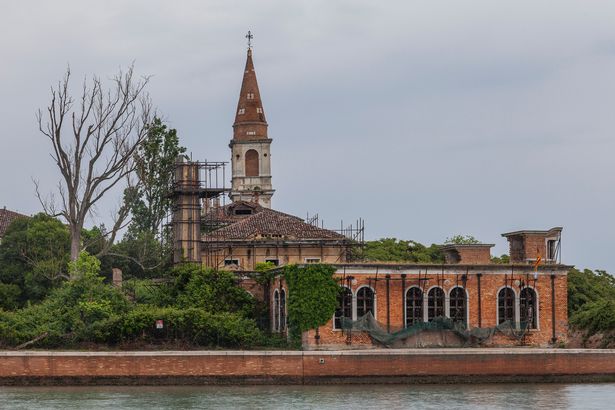
(Image: Getty Images)
It is said that more than half the soil on Poveglia Island, off the coast of Venice, is made from human ash.
Dubbed the ‘Island of Ghosts’, the 18-acre site has been untouched for decades due to its haunting past.
Used as a burial ground during the Black Death, people were shipped off to the island if they showed the slightest sign of the deadly disease.
As many as 160,000 bodies are thought to have been burned on its shores, and ‘Plague Island’ has remained strictly off-limits to tourists.
Nonetheless, it has become a popular haunt for urban explorers, who trek through its creepy ruins.
These include a dilapidated psychiatric hospital where staff allegedly performed lobotomies in a series of twisted experiments in the 1920s.
One doctor is even said to have killed himself by throwing himself off the bell tower.
Jacob’s Well, Texas

(Image: Getty Images/500px Prime)
On the surface Jacob’s Well in Texas is a summer paradise, an idyllic pool perfect for cooling off in the blistering sun.
But its true dangers lie beneath. Swim down into the water and you’re greeted with a series of pitch-black corridors that stretch more than a mile beneath the ground.
Divers must be given a special licence to explore its secrets, but even this has not stopped a series of tragic accidents.
At least nine people have died within its chambers, with the main passageway requiring a five-hour descent.
A deceptive fake exit in the third chamber left one diver fatally trapped, while two young Texans were caught in one of the well’s caves and drowned in 1979.
Even those who have survived have found themselves lucky to tell the tale. One diver attempting to recover the corpses of two men told how during the mission, he was buried up to his waist in the cave’s shifting gravel floor, escaping with a ruptured stomach – and mercifully his life.
Island of the Dolls, Mexico
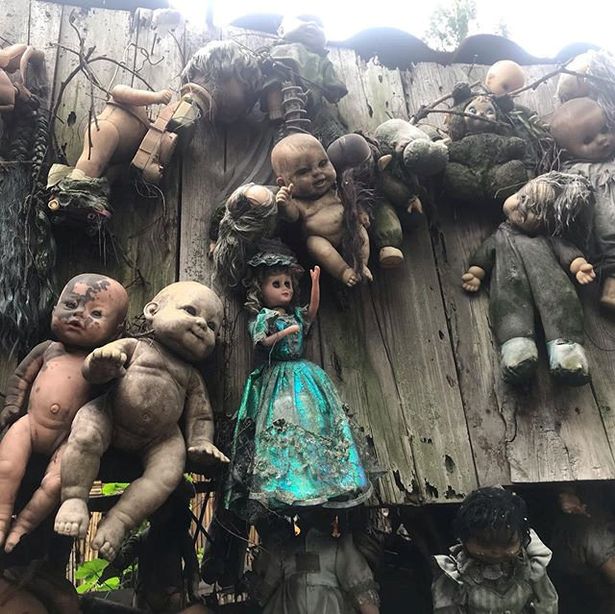
(Image: Kristopher Hewkin / SWNS)
Mexico’s Island of the Dolls is truly the stuff of nightmares – for obvious reasons.
Venture into the creepy abandoned site and you’ll be greeted with the sight of hundreds of decomposing dolls hanging from crumbling shacks and trees.
The story behind the deathly dummies is straight out of a horror movie too. In the 1950s, the island’s owner, Don Julian Santana Barrera, disovered the body of a young girl who had drowned at sea.
Days later, a doll washed up on the beach and out of respect for the girl – whom he presumed was its owner – Barrera hung it up on a tree.
Before long, however, he began to feel the presence of a haunting ‘spirit’, and in an attempt to placate it, the islander spent the next five decades hanging up the countless abandoned toys that turned up on his shores.
In 2001, Barrera’s body was reportedly found in the same location as the girl who had sparked his obsession.
Death Road, Bolivia
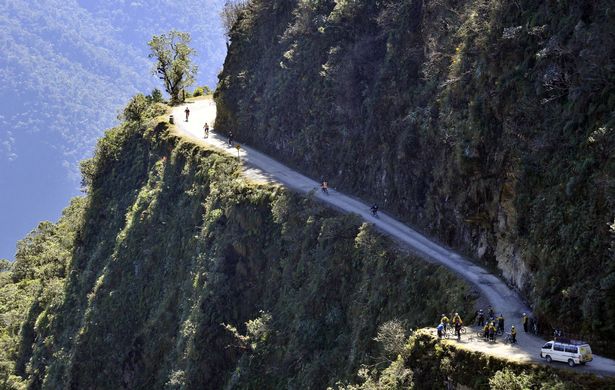
(Image: AFP via Getty Images)
Considered the world’s most dangerous road, the Camino de los Yungas in Bolvia is thought to have claimed up to 300 lives a year at its deadliest peak.
With drops of up to 2,000ft around its sharp corners and narrow roads, the ‘Death Road’ is also blighted by rock falls and mudslides that can unsettle all but the most experienced drivers.
Built back in the 1990s, the road has proved big business for adrenaline junkies, with tour operators pouncing on its fearsome reputation.
Cyclists sieze the challenge of navigating its poorly-treated tarmac, but at least 20 are said to have died since 1998.
On average, 26 vehicles are also believed to plummet over the edge each year – a grim statistic that led to the construction of a new highway nearby to divert travellers from its path.
Snake Island, Brazil
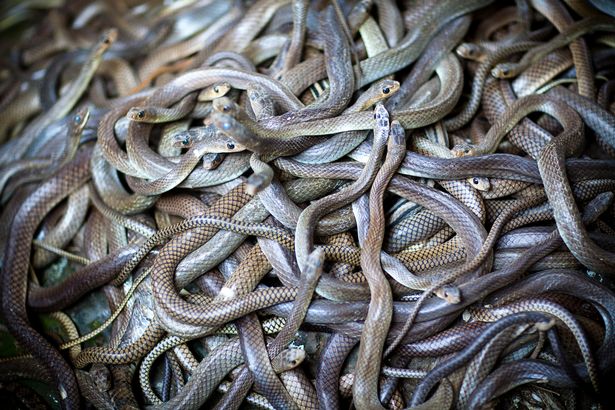
(Image: Getty Images/Johner RF)
The tropical island of Ilha da Queimada Grande in Brazil is home to thousands of residents – but they come with a nasty bite
‘Snake Island’ is believed to be infested with up to 4,000 Golden Lancehead vipers, one of the deadliest snakes in the world, and as a result is strictly off-limits to tourists.
Its skin-crawling legend has grown over the years, with reports that pirates were responsible for bringing the creatures to land in order to protect their buried treasure.
Disturbingly, though, humans have lived there. On one corner of the island lies a lighthouse, which was thought to have been manned during the early 1900s to warn off sailors.

Video Unavailable
It is said that the outpost was manned by a family who never made it back to mainland, after the creepy crawlies invaded the building through an open window.
While the Brazilian government only allows a handful of scientists to visit its rainforest for studies each year, the island has also proved a valuable resource for black market traders.
According to the Smithsonian, smugglers sneak on to its beaches to trap the snakes, which can fetch up to $30,000.


